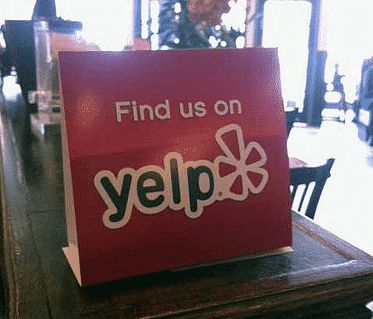Yelp is a great tool and a major annoyance for modern business owners, especially for restaurateurs. Long gone are the days when all a restaurant needed to do was set up shop, hope for a review in a local paper, some foot traffic, and word-of-mouth recommendation to drive business. There are over 1 million restaurants in the United States as of 2021. That’s quite a lot of competition.
Anyone reading this is probably somewhat familiar with Yelp already, but it’s helpful to have a little background and understand how the platform came to be what it is today.
History of Yelp
Yelp was founded in 2004 by two former PayPal employees. Initially, it was little more than email infrastructure allowing a small group of people to swap business reviews. It became what it is today in large part due to aggressive fundraising. They also continuously evolved their services to meet demand. The name is supposed to reference both “yellow pages” and “help.” It wasn’t until 2005 that Yelp launched the first website version that looked somewhat like the Yelp of today. That was when they honed in on the importance of user reviews, giving them equal importance to professional reviews. The platform just kept multiplying from that point on. Yelp began to allow business owners to reply to reviews on their page for free in April 2009. They kept growing, and in the following year, they integrated the restaurant reservation app OpenTable into their platform, allowing users to book tables directly from a restaurant’s page. The company went public in 2012. From there, it has continued to grow. Some Yelp statistics are publicly tracked. Eighteen percent of reviewed businesses on the platform are restaurants — only the “home and local services” category boasts an equally large share of platform reviews. Additionally, 51 percent of all reviews are 5-star. The app is on 31 million unique devices. There are 224 million total reviews. In addition, 503,000 different businesses are paying for advertisements on the platform. All this to say: Yelp is a hugely popular platform and, if you’re a restaurateur, it would not be wise for you to avoid leveraging it in your marketing strategy. Every restaurant should have an online presence that includes at least an official website and a maintained Yelp page.Yelp for Restaurant Owners
The core function of Yelp is that the public uses it to write reviews and find businesses based on reviews other users have already written. Basically: you want to get your customers to give you good reviews so that it’s easier to attract new customers. If you haven’t already, the first thing you want to do is officially claim your Yelp page. It’s easy to do; look up your business, scroll down the page, and you’ll see a link to claim the business. They’ll ask you a few validation questions, and you’ll soon have a little bit more control. There are a few crucial reasons to claim your page.- Update your business information, including contact info, hours, amenities, etc.
- Receive and respond to direct customer messages.
- Respond to customer reviews




